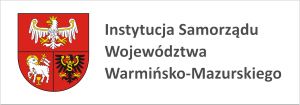"To the prudent husband Jan of Cologne, his children and legal heirs, we give perpetual possession under the Chełmno law of 140 lans in Heilsberg on both sides of the Łyna River..."
It happened. On August 12, 1308, Eberhard of Nysa granted Lidzbark a location privilege. The ambusher, i.e. the person responsible for the organization of the center, was Jan from Cologne. The gentlemen knew each other before, because John married the bishop's niece. Of course, this land had to be properly divided. Normally, a few lans were due to the ambush as a gratification for the effort undertaken. The church also had to receive its fate. It should not be forgotten that the land was to be used for common pastures, urban land and gardens, but as many as 103 lans were to be distributed among settlers, who were to pay rent for the opportunity to live in Heilsberg from the next year.
John of Cologne would not have completed the task without the employment of a surveyor, who, using the acquired skills, contributed to the success of the location. We do not know who the man was who meticulously calculated the areas and lengths of individual plots. Certainly, he was a professional in his field, because the planning of any city on the hilly area of the Warmian dominion was a real challenge. We can only assume that he also worked on the establishment of Orneta, Frombork, or Pieniężno, i.e. cities created at about the same time.
Lidzbark had its own self-government, despite the fact that the formal master of the stronghold was the bishop, who chose the mayor from among three candidates. The local authorities also needed a headquarters, which is why in the middle of the demarcated Market Square there was a place for the town hall. However, the building had more useful functions. It was in it that the city archive with the original location privilege was located, and since the medieval centers had their own measures, a pattern of cork was also stored there, which is a unit of volume for, for example, the grain sold. There were stalls around the town hall, but those who wanted to engage in trade had to pay for this opportunity. However, there was no shortage of volunteers. Lidzbark's builders wanted to protect the town hall from the fires plaguing the then cities, by moving it away from compact buildings and using more solid materials when erecting: bricks and ceramic tiles instead of wood and thatched roof. The town hall was still burning, but after each conflagration it was consistently rebuilt. Only the fire of 1865 put an end to the building. When the tongues of fire ended their destructive dance, the remnant of the municipal government house was simply demolished.
The city view from the perspective of the castle tower was captured by photographer Ryszard Czerniewski.
Mw
Bibliography;
Sikorski J., Birecki P., Spatial and architectural development of the city, art and products of artistic craftsmanship until 1772, [in:] Historia Lidzbark Warmińskiego. Volume I, ed. Mikulski K., Borodij E., Lidzbark Warmiński 2008.
John of Cologne would not have completed the task without the employment of a surveyor, who, using the acquired skills, contributed to the success of the location. We do not know who the man was who meticulously calculated the areas and lengths of individual plots. Certainly, he was a professional in his field, because the planning of any city on the hilly area of the Warmian dominion was a real challenge. We can only assume that he also worked on the establishment of Orneta, Frombork, or Pieniężno, i.e. cities created at about the same time.
Lidzbark had its own self-government, despite the fact that the formal master of the stronghold was the bishop, who chose the mayor from among three candidates. The local authorities also needed a headquarters, which is why in the middle of the demarcated Market Square there was a place for the town hall. However, the building had more useful functions. It was in it that the city archive with the original location privilege was located, and since the medieval centers had their own measures, a pattern of cork was also stored there, which is a unit of volume for, for example, the grain sold. There were stalls around the town hall, but those who wanted to engage in trade had to pay for this opportunity. However, there was no shortage of volunteers. Lidzbark's builders wanted to protect the town hall from the fires plaguing the then cities, by moving it away from compact buildings and using more solid materials when erecting: bricks and ceramic tiles instead of wood and thatched roof. The town hall was still burning, but after each conflagration it was consistently rebuilt. Only the fire of 1865 put an end to the building. When the tongues of fire ended their destructive dance, the remnant of the municipal government house was simply demolished.
The city view from the perspective of the castle tower was captured by photographer Ryszard Czerniewski.
Mw
Bibliography;
Sikorski J., Birecki P., Spatial and architectural development of the city, art and products of artistic craftsmanship until 1772, [in:] Historia Lidzbark Warmińskiego. Volume I, ed. Mikulski K., Borodij E., Lidzbark Warmiński 2008.

















